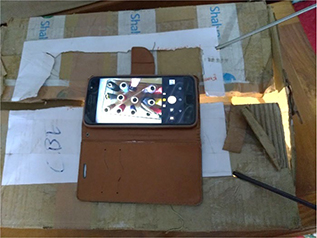
Figure 1. Cardboard box trainer using 2 cell phones
CAPACITY BUILDING
Jesudian Gnanaraja
a MBBS, MS, MCh (Urology), FICS, FIAGES, FARSI (Rural Surgery), Director of Medical Services, Surgical Services Initiative, Association of Rural Surgery, India
Given the COVID-19 global pandemic, there are severe restrictions on travel in India and other countries. The Indian Government has issued an advisory for postponing non-essential or elective surgeries. Surgeons, especially those working in rural areas, have more time at hand to learn new skills. Unfortunately, due to the lockdown, purchasing new equipment has been difficult. We describe how Fellowship of Laparoscopic Surgery course skills for Gas Insufflation Less Laparoscopic Surgeries could be practised at home with easily available materials to make use of the time and build surgical skill capacity.
Key words: low cost simulator, gas less laparoscopic surgery, FLS tasks
Corona virus disease 2019 (COVID-19) is a global pandemic and has brought in severe restrictions on travel in India and other countries.1 The Indian Government has also issued an advisory for postponing non-essential or elective surgeries.2 This essentially means that surgeons, especially those working in rural areas, have a lot of time at hand. It has been a good time to learn new skills. Unfortunately, due to the lockdown, purchasing new equipment has been difficult. We describe how skills for Gas Insufflation Less Laparoscopic Surgeries (GILLS) could be practised at home with easily available materials.
Learning Minimally Invasive Surgery (MIS) skills for mission and rural hospitals is important because after the pandemic, the surgical and other services would be decentralized and offering MIS would make these hospitals relevant once more.
The Fellowship in Laparoscopic Surgery (FLS) course is a validated course for teaching and evaluation. It has a list of tasks to perform and methods of evaluation.3 The FLS improves intraoperative laparoscopic skill and predicts performance.4 Even those not routinely doing laparoscopic surgeries can learn these skills and become proficient in them.5
A variety of trainer boxes are available.6 Unfortunately, none of them could be delivered during the lockdown. A simple training box can be made with easily available items in the house like a cardboard box and two cell phones as shown in Figure 1.

Figure 1. Cardboard box trainer using 2 cell phones
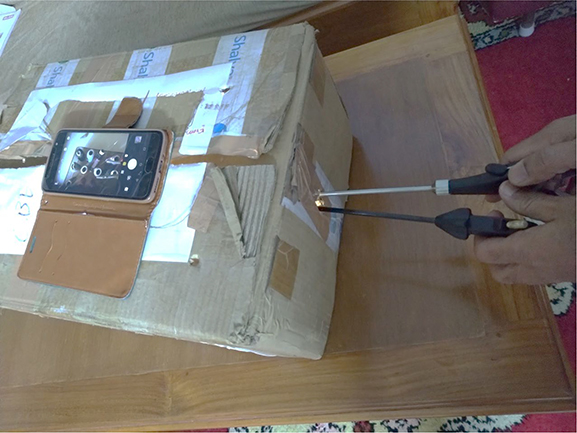
Figure 2. For single incision laparoscopic surgery (SILS) practise
One of the phones is kept inside the box to provide sufficient light, and the other one is used as a camera. Maryland forceps and needle holders are necessary for practice. One more hole could be made in the front for practising single incision surgeries.
The FLS program assesses the skills for peg transfer, precision cutting, ligating loop, and extra/intra corporeal knotting.7,8 For a clearer picture, we show the skills from the larger monitor of the endo-trainer box we use. However, practice for all of the skills are possible using the cardboard box. If the commercial pegs are not available, as shown in Figure 3, colour threads and holders can be used instead. The thread is picked up with the Maryland forceps, transferred to the needle holder, and placed on the slot for holding the thread. This gives an excellent opportunity for converting the 2 D image to 3 D actions. Further practice is possible by changing the hands holding the instruments, placing the box at different places and angles.
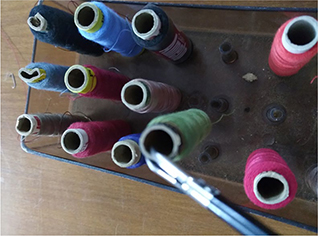
Figure 3. Thread and holder for Peg Transfer
The commercial endo loops are expensive. A low-cost endo loop can be made using the pusher of the DJ stent and Prolene suture.9 Glove fingers can be used for practising knotting and cutting. Some cotton pieces or gloves can be placed inside the fingers of the gloves to make them a little more realistic.
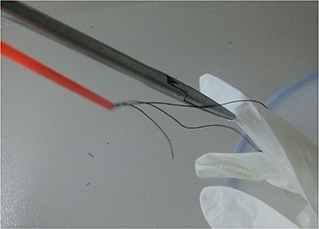
Figure 4. Homemade Endo – Loop with Pusher
For extracorporeal knotting, either the regular knot or modified Roeder’s knot can be used. Homemade pushers are shown in Figure 5.
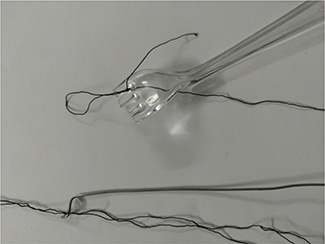
Figure 5. Homemade Pusher Versions
Several techniques of intracorporeal knotting is described.10 Suturing is another skill that needs practice. To practice suturing, it is easy to use a gauze piece that is going across the field as shown in Figure 6.
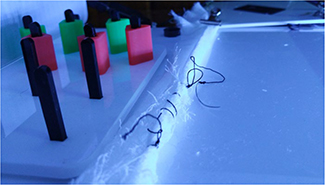
Figure 6. Suturing with a gauze piece
A reusable needle and ordinary thread can be used for practice. This could be used many times and the thread used costs very little. (Figure 7)
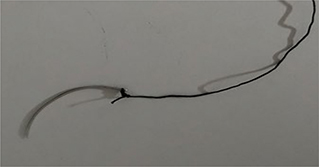
Figure 7. Thread and reusable needle
The readymade material for precision cutting would be expensive. A simple but perhaps even better way would be to pack some gauze pieces inside the glove and mark the place for cutting on it with a marker pen (Figure 8). Unlike the readymade ones, the line would be in different depths, and also, we can learn to pull out the single gauze piece below it without disturbing the others to practice dissection using the instruments with both the hands.

Figure 8. Practising dissection with glove, marker, and gauze
Gas Insufflation Less Laparoscopic Surgeries (GILLS) are ideal for rural areas as they are possible under Spinal Anaesthesia.11 The above methods help to prepare for GILLS using locally available materials during the lockdown except possibly for the Maryland forceps and laparoscopic needle holder. If these are not available, ordinary long needle holders and Kelly clamps could be used with smaller boxes.